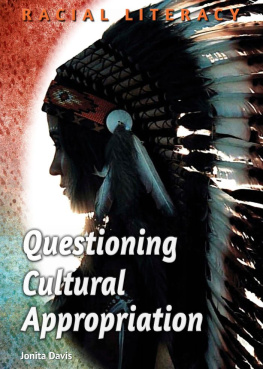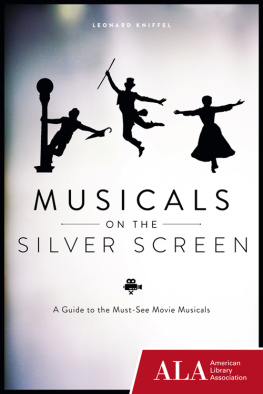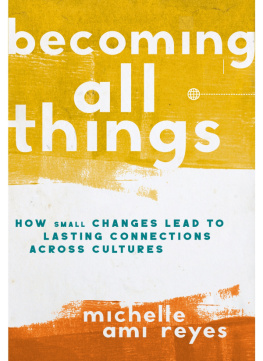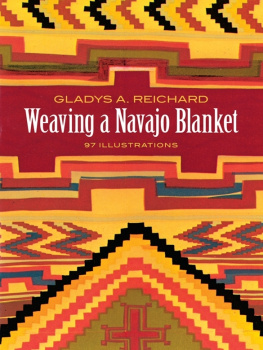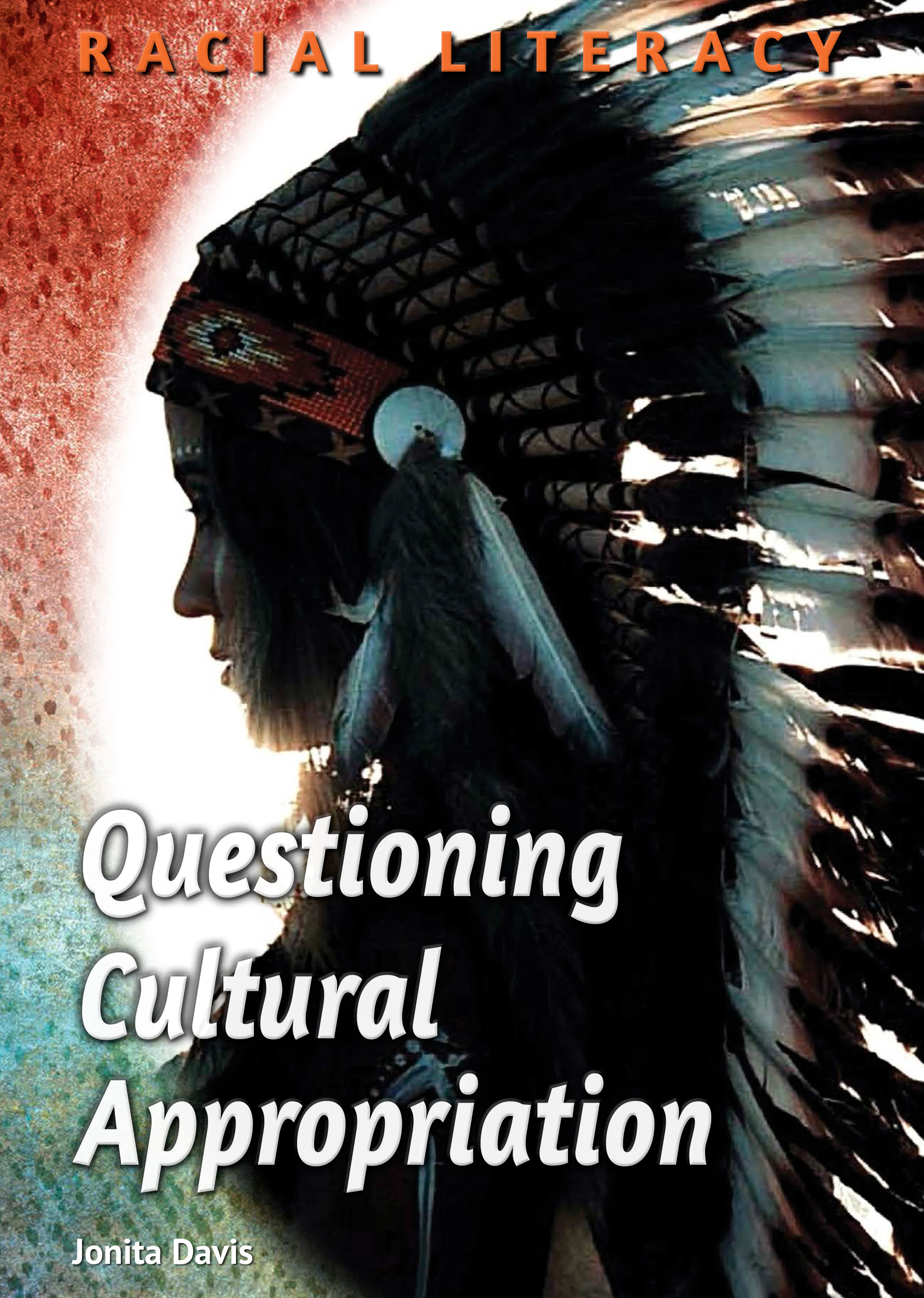Published in 2019 by Enslow Publishing, LLC.
101 W 23rd Street, Suite 240, New York, NY 10011
Copyright 2019 by Enslow Publishing, LLC.
All rights reserved.
No part of this book may be reproduced by any means without the written permission of the publisher.
Library of Congress Cataloging-in-Publication Data
Names: Davis, Jonita, author.
Title: Questioning cultural appropriation / Jonita Davis.
Description: New York : Enslow Publishing, [2019] | Series: Racial literacy |
Audience: Grade 7-12. | Includes bibliographical references and index.
Identifiers: LCCN 2018020364| ISBN 9781978504684 (Library bound) | ISBN 9781978505636 (pbk.)
Subjects: LCSH: Imitation. | Adaptability (Psychology) | Cultural property.
Classification: LCC BF357 .D38 2018 | DDC 155.2/4-dc23 LC record available at https://Lccn.Loc.gov/2018020364
Printed in the United States of America
To Our Readers: We have done our best to make sure all website addresses in this book were active and appropriate when we went to press. However, the author and the publisher have no control over and assume no liability for the material available on those websites or on any websites they may link to. Any comments or suggestions can be sent by email to .
Photo Credits: Cover, p. 1 PabLo Martnez/EyeEm/Getty Images; p. 5 BLoomberg/Getty Images; pp. 6-7 Poras Chaudhary/Stone/Getty Images; p. 8 iStockphoto.com/taLent bender/Getty Images; p. 10 Fabio Diena/Shutterstock.com; p. 12 Boston GLobe/ Getty Images; pp. 14, 18-19, 56 AP Images; pp. 16-17 Jim West/ALamy Stock Photo; p. 23 Igor Dutina/Shutterstock.com; p. 25 David Tran Photo/Shutterstock.com; p. 27 kobbymendez/Shutterstock.com; p. 29 Tono BaLaguer/Shutterstock.com; pp. 32-33 Entertainment Pictures/ALamy Stock Photo; pp. 34-35 India Picture/Shutterstock .com; p. 36 Dragon Images/Shutterstock.com; p. 37 VaLery SideLnykov/Shutterstock.com; p. 40 AJP/Shutterstock.com; p. 42 Simon Scott/Moment/Getty Images; p. 44 Giles Clarke /Getty Images; p. 45 mimagephotography/Shutterstock.com; p. 48 Andrey_Popov/ Shutterstock.com; pp. 50-51 Grant Faint/PhotoLibrary/Getty Images; p. 53 ton koene /ALamy Stock Photo; p. 54 hvostik/Shutterstock.com; p. 58 DigiPub/Moment/Getty Images; p. 60 CJM Grafx/Shutterstock.com; p. 62 AA Images/ALamy Stock Photo; p. 63 UniversaL History Archive/UniversaL Images Group/Getty Images; p. 65 PauL Fearn/ALamy Stock Photo; p. 67 Cookie Studio/Shutterstock.com; p. 68 VW Pics/UniversaL Images Group/Getty Images; cover and interior pages background design Ensuper/Shutterstock .com (coLors), MiLoje/Shutterstock.com (texture).
Contents
In May 2017, two white women-Liz Connelly and Kali Wilgus-opened a burrito cart, Kooks Burritos, in Portland, Oregon.1 The cart was shut down days later after claims of cultural appropriation. Connelly and Wilgus specialized in tortillas made using the traditional recipe and process of the women of a small village of Puerto Nuevo, Mexico. Connelly told reporters the villagers taught them how to make the tortillas and that they gave the information freely. Despite the protests of their cart, the women didnt think their act was cultural appropriation. It was.
The color run has become a very popular fund-raiser. During the event, runners race while wearing white or light-colored clothing. People line up and throw colorful powders at the racers. The color run was stolen from another culture: Hindus in India celebrate a centuries-old religious holiday called Holi, a celebration of the coming spring.2 People dance while throwing colorful powders in the air. There are also special foods, drinks, prayers, and more dancing.Holi was stripped down to just color powder and appropriated by American nonprofits and schools.
A woman from a rural Mexican town prepares corn tortillas made by hand at the market.

Color run fund-raising events are watered down versions of the vibrant Holi festival celebrated in India. This picture shows the intensity of not only the color powders but also the participation by all involved.
One well-known case of cultural appropriation happened in 2016, when Kim Kardashian rocked boxer braids as her new hairstyle.3 She took credit for the braids in many pictures and posts before people started calling her out on cultural appropriation. Turns out, her new hairstyle has been worn by several cultures and for centuries. For example, people descended from African tribes have used braiding for sending messages, showing their wealth, and more. Kardashians case is more obvious, but just as harmful as the color run and the burrito cart.
All three cases are cultural appropriation, despite the different ways it happened. The act of cultural appropriation requires the taking of something that is unique to a group of people. A more dominant culture often does this. Some call it outright stealing. In cases like the Portland burrito cart, the information was not stolen but shared. The problem is that Connelly and Wilgus took the shared cultural information and used it for their own profit. The recipes and lessons were never theirs to make money from.
Taking from another group of people is only one part of cultural appropriation. This doesnt happen with just events, hair, and recipes. As you see with the Holi/color run appropriation, cultural elements can be rituals as well. These can be artifacts, technology, and even processes that are unique to a certain group of people. Cultural appropriation is taking a cultural element from a people and using it out of context or without context at all.4 Its also something we all have a responsibility to prevent.

This is a cornrow braid style that is typical among black girls, teens, and women. However, the styles are deemed fashionable when white celebrities appropriate the cornrow style as a new trend.
American history is full of cases where cultural appropriation was left unchecked and caused harm. It doesnt matter if the cultural item was taken for personal gain, profit, or fame. The outcome is ultimately the same-to harm the minority culture, the one whose things are stolen. The parts of an appropriated culture can get picked off, pulled apart, absorbed, and assimilated until the original culture becomes unrecognizable. Sometimes all that is left is a ghost of the culture in a shell created by the people who took it. In many cases, it looks nothing like the original at all.
The one thing that people get hung up on is the taking part of cuLturaL appropriation by the dominant culture. That taking often ends up damaging the original culture in some way. Taking something from another culture can happen a few different ways. Before you begin going out and questioning cultural appropriation, you must understand all these various pieces.

